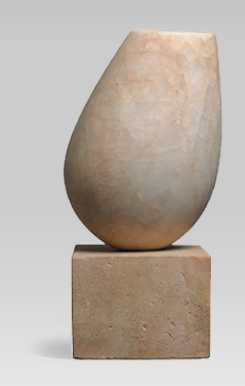Constantin Brancusi (1876-1957) is a legendary figure of twentieth-century art. He was described by one of his contemporaries, the poet Guillaume Apollinaire, as an artist of "great refinement," a description that fits both Brancusi's spiritual quest as a sculptor and the radically simplified, essential forms of his sculpture. Brancusi arrived in Paris in 1904, exactly one hundred years ago, and quickly established a reputation as the leading sculptor of his day. He trained briefly under Auguste Rodin but soon abandoned the realistic style of sculpture that was then dominant and took up carving in both wood and stone, a technique traditionally associated with craftsmen and folk art. The directly carved works he began to produce were a radical departure both for Brancusi and the course of modern sculpture; they were an assertion of the importance of direct engagement with materials.
Organized thematically, Constantin Brancusi: The Essence of Things seeks to capture the essential character of Brancusi's sculpture. This carefully selected group of works, primarily carved from wood and stone, traces themes that preoccupied the sculptor for more than thirty years. In sequences of related pieces, Brancusi started with an emotive naturalism, often based in the human form, as in series based on a lovers' kiss, a torso fragment, the human head, or a specific portrait. Over time, the artist pushed each sequence toward pure abstraction, erasing details and universalizing the forms at the heart of his works. The exhibition also presents key examples of Brancusi's independent wooden sculptures, which demonstrate a different trajectory in his carving; these creations evoke the totemic and tribal, referencing Brancusi's response to African and Romanian folk cultures.
By responding to modernist ideals of purity and refinement through a language imbued with the rhetoric of craft, Brancusi profoundly influenced the development of twentieth-century sculpture. Many of his greatest and most abstract works evolved from a long process of meditation, repetition, and refinement, demonstrating the artist's view that "what is real is not the external form but the essence of things."
Contantin Brancusi, Torso of a Young Girl, 1922. Onyx, 17 7/8 x 9 x 8 1/4 inches; limestone base, 5 5/8 x 7 5/8 x 7 1/8 inches. Fogg Art Museum, Harvard University Art Museums, Cambridge, The Lois Orswell Collection. © 2004 Artists Rights Society (ARS), New York/ADAGP, Paris.
For more Brancusi works in our collection and biography information please
visit our Collection site.
|

